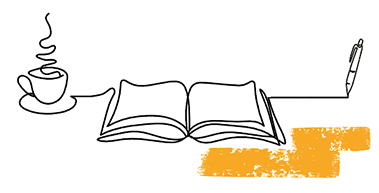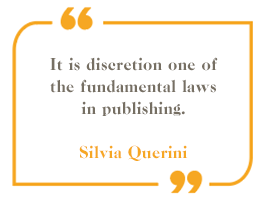
Editing
The editing process is not a matter of taste, nor is it proofreading. Editing is teamwork between the author and the editor that seeks to settle on the best original for its target reader.
The author focuses on the work. The author´s style serves if it leads the narrative thread of the story without overshadowing it. The same is true of outreach texts or other genres.
The editor thinks of the reader. My function is to ensure that the author contributes the best so that the manuscript is suitable for its reader.
What types of text do I edit?
- outreach books
- novels
- short stories
- biographies
- articles
- speeches
- reports
- flyers and brochures
- catalogs


How will we work together?
1. Request
I receive your query to edit a manuscript. I will ask you to send it to me to form an idea about it, always under confidentiality.
2. Meeting
I like to schedule a virtual meeting. If you agree, we will meet for a while to get to know each other and learn more about the manuscript and the service you need.
3. Acceptance
I send you a quote for the agreed service and an estimated schedule. We will start working when I receive your acceptance.
4. Editing
During this process, we will work on the manuscript in two stages. After the initial reading, we will focus on macro-editing and then on micro-editing.
5. Review
During both stages, I will send you the manuscript with suggestions and observations that you will have to evaluate. If you have any doubts, we will meet to discuss them or you can send me your comments in writing by return mail.
6. Final editing
I verify that all agreed editions are in the final manuscript.
What is editing?
Editing is a process that consists of several steps:
Deep reading
As an editor, I put myself in the shoes of the intended reader of the manuscript. I always read it within a framework that identifies the subject matter, readership, genre, textual type, among others. In addition, I check for aspects that hinder the physical, structural, linguistic and psychological readability of the text. Evaluating readability is essential to ensure the reader’s comprehension.Macro-editing
After the previous reading, there will be cases in which I will talk to the author to understand aspects of the content. The author is the specialist in the subject matter. The editor is a specialist in textual communication. The result of this stage is a report that provides observations and suggestions on the manuscript for the author to evaluate.Micro-editing
I receive the manuscript modified by the author with the suggestions adopted. In the previous stage, I worked on the structure. Now, I do it at sentence and phrase levels. I apply intervention strategies that seek to make the text clearer, more fluent and precise.
The goal will be to work as a team to achieve the best original for the target reader.

